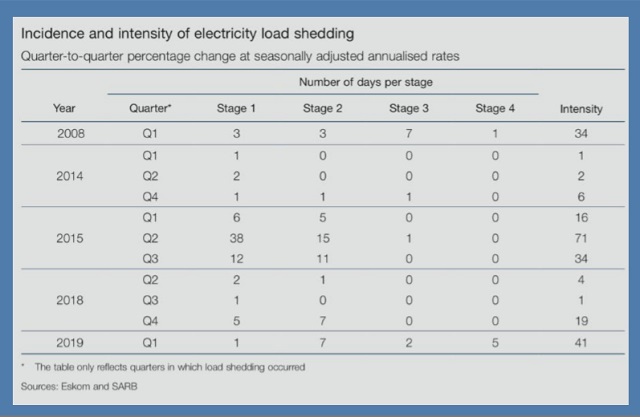
Escalating debt arrears
Finally, Eskom’s most critical—and seemingly unsurmountable—hurdle is to tackle “a significant decline in liquidity, due in part to escalating municipal arrear debt and rising debt service costs, exacerbated by lower than required price increases awarded by [the National Energy Regulator of South Africa (NERSA), the federal agency, that regulates the power sector and determines Eskom’s revenue requirements].” Owing to NERSA’s inadequate tariff awards, the utility says that it is hobbled by a stunning debt burden of 450 billion rand ($30 billion). NERSA’s latest tariff decision to increase tariffs by between 5.2% and 9.4% over the next three years by NERSA in March, it said, will leave Eskom with a projected revenue shortfall of around 100 billion rand ($6.7 billion). But NERSA explained that it arrived at its decision having offset a bailout granted to Eskom this February by the Minister of Finance of 23 billion rand ($1.5 billion) for the next three years. In August, the Department of Public Enterprises noted that the Finance Ministry had tabled a “special appropriation bill) that would inject another 59 billion rand into Eskom, effectively bringing total bailout funds to 128 billion rand ($8 billion) over a three year period.
However, the utility balks at being forced to rely on government bailouts to survive because it opens it up to “ongoing political intervention,” it said in its April-released 2018 integrated report. “To enhance our autonomy, we need to turn around our operational and financial performance and rebuild Eskom as a sustainable organisation, albeit with a strong developmental mandate.” That’s one reason that the utility on Oct. 11 took the desperate step of challenging NERSA’s latest tariff decision in court. Company officials argued it needed this “urgent interim relief” because it was “necessary to avoid financial disaster.”
South Africa’s government, meanwhile, granted the bailout under the condition that the company establish a “restructuring office” that would deal with debt and “interrogate various proposals to resolve Eskom financial challenges.” In August, the government said one avenue it is pushing is to split the company into three entities, starting with a creation of a transmission entity—a recommendation that is in line with government ambitions outlined as far back as 1998. Privatisation of Eskom may not be on the table, however: President Ramaphosa told lawmakers in October that Eskom’s plants are “Crown Jewels,” and that “South Africa is not inherently in the business of selling power stations.” For now, more light on how the country will proceed to diminish Eskom’s massive debt may be shed in a government “special paper,” which the government said in August will clearly outline a roadmap for Eskom’s “long-term sustainability.”
****
Source: Powermag
 The Independent Uganda: You get the Truth we Pay the Price
The Independent Uganda: You get the Truth we Pay the Price


